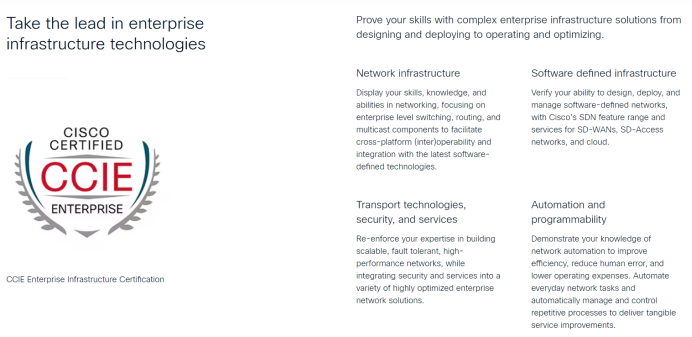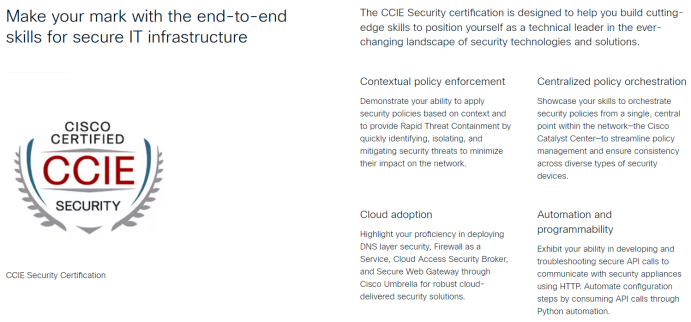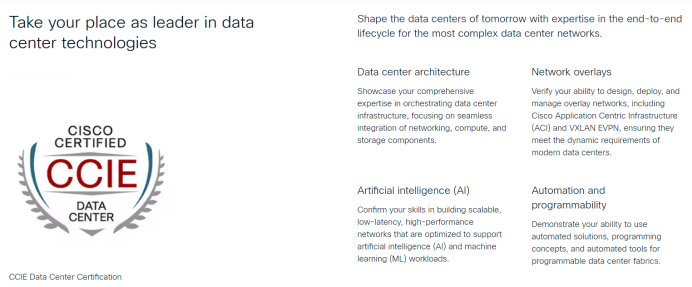Many people often ask:
"I want to get a Cisco certification, but there are so many tracks—how do I choose the right one?"
As a seasoned network engineer, I’ll break down Cisco’s main certification tracks for you—explaining the positioning of each track, who they’re suitable for, and sharing some exam preparation tips. This will help you avoid the common pitfalls of “direction confusion” and “taking the wrong prep path.”
Officially licensed exam dumps help you prepare more efficiently and with confidence!

First Things First: How Cisco Tracks Are Structured
Cisco certification tracks aren’t created randomly—they’re designed based on industry demand. Whenever enterprises need a particular type of networking talent, Cisco offers a corresponding track.
Each track follows the same hierarchy:
CCNA (Associate) → CCNP (Professional) → CCIE (Expert).
No matter which path you choose, you can progress step by step, without worrying about hitting a dead end.
The Logic Behind Cisco’s Tracks
The core Cisco tracks revolve around:
• Enterprise networking
• Security
• Data center infrastructure
These areas represent the most stable demand in today’s ICT industry and offer the broadest career opportunities.
Less common tracks (like Industrial Networking or Service Provider) are more niche with fewer job opportunities, so here we’ll focus only on the mainstream tracks most learners care about.
Main Cisco Certification Tracks: Positioning + Target Audience
1. Enterprise Infrastructure – The “Generalist” Track
Previously called “Routing & Switching,” this is the most classic and popular Cisco certification track. Its focus: how to build and maintain enterprise networks.
Core Exam Focus :
• Switch & router configuration
• Campus network architecture
• SD-WAN deployment
• High availability & fault troubleshooting
In short: this track equips you to handle everything from a small office LAN to connecting multiple branch offices across regions.

Best suited for:
• Beginners: It’s the gateway to the networking field. With solid prep from dumps, you can land roles in network operations or implementation.
• Network engineers looking to upskill: If you currently do basic device configs but want to move into campus design or SD-WAN projects, this is your best bet.
2. Security – The “High-Demand Growth” Track
With enterprises placing increasing importance on cybersecurity, this track’s popularity keeps rising. Its focus: protecting enterprise networks.
Core Exam Focus:
• Firewall configuration
• Intrusion prevention systems (IPS)
• Secure VPN connectivity
• Identity and access control
• Data loss prevention (DLP)
• Common attack defense (e.g., DDoS, SQL injection)

Best suited for:
• Aspiring security professionals: If you want to become a security operations or implementation engineer, the exam banks will help you master the essentials.
• Career switchers from networking: If you’ve done 1–2 years in network ops and want higher salaries and career growth, this track is an excellent pivot.
3. Data Center – The “Advanced” Track
This track focuses on enterprise data center networking—with higher technical difficulty, but also higher salary ceilings.
Core Exam Focus :
• Cisco Nexus switch configuration
• VXLAN network virtualization
• SAN (Storage Area Network) integration
• High availability & disaster recovery design
In short: you’ll learn to build the network foundation for mission-critical business systems like e-commerce platforms or financial transaction systems.

Best suited for:
• Ambitious professionals aiming for top-tier roles: Especially in internet giants or finance companies.
• Intermediate engineers looking to level up: If you’ve got 2–3 years in enterprise networking and want to master more complex scenarios, this track is for you.
3 Practical Tips for Choosing Your Track & Preparing
1. Don’t follow the hype—start with your career goals.
Check job postings for your target city/role. In smaller cities, Enterprise Infrastructure jobs dominate. In first-tier cities, Security and Data Center roles have higher demand. Choose based on job fit.
2. Beginners should start with Enterprise Infrastructure.
It’s the “universal language” of networking and forms the foundation for Security or Data Center. The dumps for this track cover the widest range of practical scenarios.
3. Study step by step—don’t skip levels.
Start with CCNA to master the basics. Then use the CCNP dumps to solidify enterprise-level skills. Once you’ve built real-world experience, go for CCIE with advanced dumps.
Skipping straight to CCNP without CCNA often leads to “knowing but not understanding”—wasting time in the long run.
Final Thoughts
There’s no “best” Cisco certification track—only the one that suits your career path.
Choose the right direction → preparation becomes more motivating
Use dumps strategically → preparation becomes more efficient
Earn the certificate → connect directly to the right job opportunities
If you’re still unsure which track to pick, start by checking the CCNA exam outlines for each. See which content excites you most—because interest is the best driver of success.
I'm your man who have the 100% valid dumps , buy it now for 50% off to clear your exam!
Click it ↓↓



